The words were grand, the car less so. On September 1957 the Kaiser-Frazer Israel (Kafris) management presented the Israeli Commerce and Industry Minister, Pinhas Sapir, with plan “X1” for the production of a small vehicle. The impression this plan must have had was great: the Kafris’ people forecast a near-complete own production of a “Popular Car” within ten months, at a scale of no less than 5,000 units annually. Exports were supposed to form over half of the output, where the export revenues should cover the import costs involved, to actually create a foreign exchange surplus. For the cash-striven Israeli economy, this probably sounded like an act of god. These plans, however, all quickly evaporated into thin air. Yet the Haifa plant had to review them several times, with necessary adjustments made, during the coming four years.
Renzo Rivolta, an Italian industrialist, had his refrigeration equipment company, Iso, converted into a car manufacturer that launched a midget twin-seater in 1953. Not a lot more than a canopied scooter, Isetta was to become world-famous and synonymous with the bubble car, mainly thanks to BMW, who had adapted Iso’s formula time and again, eventually making it a “real” car and with model 700 in 1959, its financial savior. Iso sold the rights for the Isetta abroad. In France, it was VELAM to acquire the production rights, if not the bodywork stamping tools. Velam was led by Ing. Roger Budin, a former Simca and Hotchkiss executive. Budin presented his Isetta at the 1954 Paris show. Its production, at the former Simca site in Suresnes on the outskirts of Paris, started shortly afterwards. But while BMW had gradually widened its Isetta portfolio and production volume, Velam was heading for obscurity. Some 1,200 units were produced in 1955, with this figure quadrupling the year after. In 1957, and in spite of the introduction of a more luxurious version, this figure shrunk to a mere 1,005 units.
Across the Mediterranean, close by the city port of Haifa, Ephraim Illin’s six-year old company was struggling as well. Its installed capacity was 6,000 units annually and the original plan called for 90% exports. In 1957, assembly totaled less than 2,500 units. Even though Kafris was now at the peak of its assembly licenses’ harvest, with the Willys-Overland full range and the latest Renault compact, the Dauphine, it could not keep its volume promise and was unable to export profitably. The Israeli market was intentionally kept limited and tiny: Illin had purchased 890 Renault CKD kits in 1957, but the low demand meant only 656 were actually assembled. Furthermore, the inauguration of the stamping plant in 1956, a large-scale investment, meant Kafris was craving for work. The energetic and quick-thinking Illin, already well-familiar with the French capital’s atmosphere, had probably seen the de facto merger with Velam as an opportunity he could not miss.
Thus, on September 1, 1957, following a series of discussions with Sapir, one of the more influential people in the Israeli economy at the time, Kafris had submitted its plan X1 “for the manufacture of a small popular car within the framework of the industry development in the southern city of Sderot”, this being part of Kafris’ plan to construct a series of plants in that city. “The rising demand for the popular car of the Isetta and the Goggomobil type”, so opens Kafris’ executive Goldfarb its presentation, “made us look into the option of producing such a car locally”. Goldfarb then introduced Ing. Roger Budin, stating the latter made a thorough survey into Kafris’ plants and the Israeli industry at large, and concluded that local production of a small car bearing an Israeli name can be achieved within 8-12 months.
Budin envisaged a “special and exclusive” line-up, to include three models. All should be built using a minimal amount of imported goods and parts:
– A two-seater, twin-stroke 236cc, 2.36m long. Kerb weight 280kgs
– A light commercial, 431cc, 2.60m, for a driver, passenger and a 500kgs load
– A four-seater
Budin was to be responsible for the construction of the new plant in Sderot, where the drive train would be produced. No less interesting was the reference for “all of the know-how and expertise, which Budin had agreed to make available for [Kafris]”. According to the plan, the body stamping equipment was to be leased from Budin, in return for a royalty fee, to be paid for every car built. By the end of 1957, Velam’s production line closed for good. This minor detail, or at the very least the events that led to the premature closure, were probably well known to the presentation’s writers. It was not even hinted, and that may shed a different light upon this French altruism. It now looks as if Budin saw Illin as his last resort before going out of business, and was willing to sell the Parisian tools on a long-term loan. It is also quite clear that Illin was not eager to underline his prospective partner’s problems.
The forecast figures were impressive: direct and indirect employment for additional 650 workers, and profitable exports of some 2,500-3,000 units a year, not accounting yet for the light commercial. As local content was estimated at 70-75%, and given the extent of the planned exports, the Israeli treasury was to have a surplus in foreign exchange of over 500,000$ a year. This optimistic export forecast was based on several claims, well worth looking into. The first one was that BMW had sold over 8,000 Isettas in the U.S last year, and is about to increase exports to 20,000 units this year. This was not accurate. Isetta exports to the U.S. totaled around 8,500 units. The second claim related to the marketing channels. According to which, with the concept’s approval by the government, the usage of the Renault or the Willys-Overland networks in the U.S will be explored. That very claim was refuted in a former paragraph, were Kafris claimed Budin had allegedly turned down an offer for the sale of 3,000 units in the U.S, as his agreement with the Italian Iso did not allow that. As BMW were exporting the Isetta to the U.S, it can be safely assumed they would not have authorized this competitive export. The plan had also included another marketing channel, this being Kafris’ own distribution network in the French Colonies, Finland, Latin America, Western Africa and Portugal. It is highly arguable whether these markets could have found a room for the Israeli Isetta. Unsurprisingly, the Industry Division Manager at the Ministry refused to bite, and conditioned the government’s approval on the receipt of a market survey that would prove such export markets actually existed.
Illin and his team knew well that even the local market production figures, 2,000 units a year, would require some revolutionary steps. In taxation, naturally. “The small passenger car will be a blessing for the transportation in Israel”, the plan declared. “If it would not be burdened by heavy taxation, it could serve as a people’s car”, added Illin and Goldfarb, calling for a reduction in purchase tax from 35% to 20% on the wholesale price. Another request was for the abolishment of the purchase restrictions for new cars, first and foremost the need for a specific purchase permit. Here, too, the industry ministry was unable to reply positively: “you know well that we cannot accept these requests”, answered the division manager.
A few months later, on March 1958, the Sderot Popular Car plan was dead and buried. Illin had presented the Industry division with yet another paper, detailing production and required financing, among others. This time the plan had no mention of exports, and the division manager was raging: “I have to express my disappointment as to how an original production plan, based on self-sufficient usage of foreign exchange, was transformed into a trivial production plan that only adds heavy burden to our budget. I cannot recommend the government to accept this plan as our principal approval was made on the assumption that the government would only allocate forex on an import-for-export basis. Since this no longer is the case and you are now asking for allocations without any plan or a clear future commitment, there is no room to further discuss this plan”.
Illin had to mothball the popular car dream, at least for a while. A year and a half later, with the Renault affair being over, he would have had no choice but to review it again.
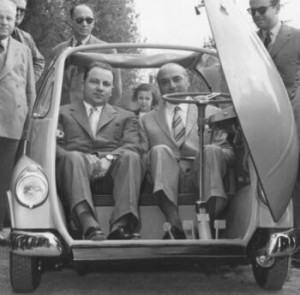
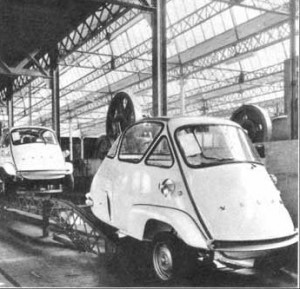

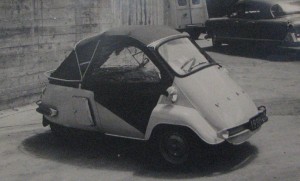
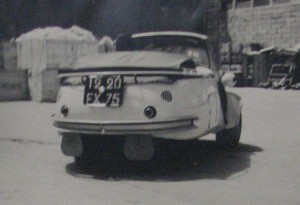
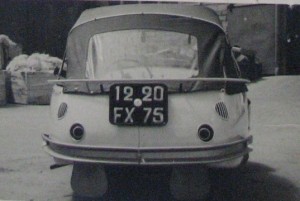
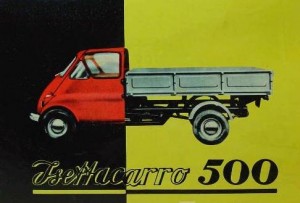

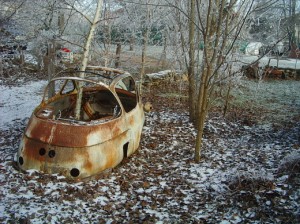
Excellent Site with detailed history describing the connections between israel and the BMW Isetta. Vist our UK website at http://autos.groups.yahoo.com/group/IsettaWorld/